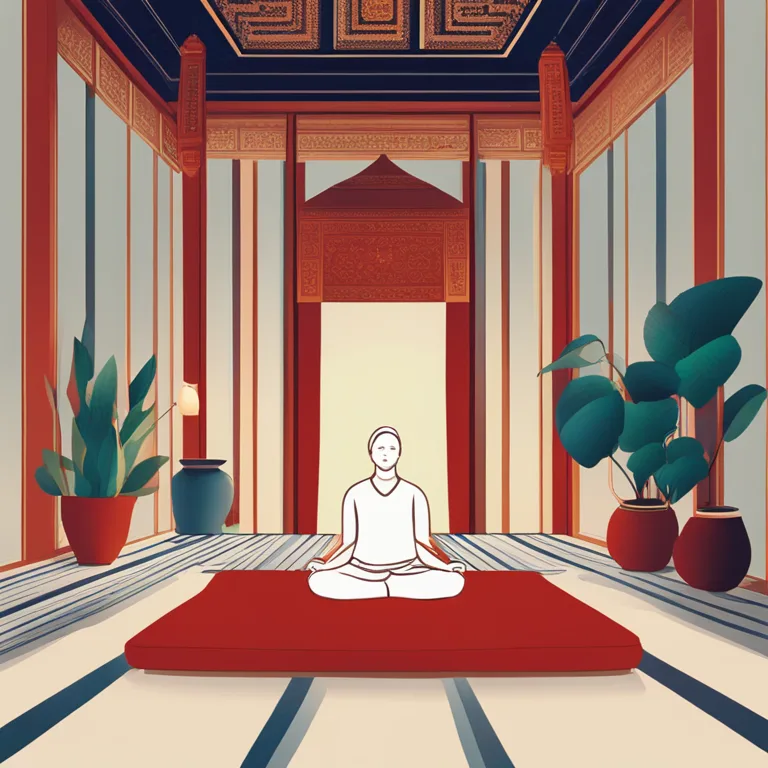
Meditation Techniques for Restful Sleep
Discover effective meditation techniques to promote a deep, restful sleep and enhance your bedtime routine.
article by Hina Kurosawa
The Role of Meditation
Meditation has long been embraced as a tool for fostering mental clarity and emotional balance. As we tread further into 2024, the importance of reducing stress before bedtime to improve sleep quality has become increasingly evident. Engaging in meditation techniques tailored for nighttime use can significantly impact our ability to unwind and transition into a restorative sleep state. The following practices are designed not only to relax the mind and body but also to set the stage for a night of deep, uninterrupted sleep.

Body Scan Technique
Begin your pre-sleep meditation with the body scan technique, a method focused on releasing tension from the body. Lie comfortably on your bed and close your eyes, then mentally scan your body from head to toe. As you focus on each area, visualize the tension melting away and your muscles becoming loose and heavy. This technique encourages mindfulness and helps to anchor your awareness in the present moment, freeing you from the day's worries and preparing you for a peaceful slumber.

Breath-Focused Meditation
Breath is the essence of life and a cornerstone of meditation practice. By shifting your focus to your breathing, you can calm your mind and ease into sleep. Try the 4-7-8 breathing method: inhale for a count of four, hold for seven, and exhale for eight. This pattern effectively reduces anxiety and prepares your body for sleep. Remember to breathe slowly and deeply, allowing the rhythm to lull you closer to the dream world with each breath.

Mindfulness Meditation
Mindfulness meditation involves staying present and grounding yourself in the here and now. As you lie in bed, take note of the sensations around you: the softness of your sheets, the ambient room temperature, the subtle noises of the night. Acknowledge any intrusive thoughts, but let them pass like clouds in the sky. This practice not only eases the mind into a relaxed state but also cultivates a nightly routine that signals to your body it is time to sleep.

Guided Visualization
Guided visualization can be particularly effective for those who find their minds racing at night. Imagine yourself in a serene environment—a quiet beach, a tranquil forest, or a silent mountain top. Visualize the details of this place, from the colors and sounds to the feelings they evoke. Many guided visualization resources are available in 2024, including apps and online audio tracks that can be used to facilitate this process.
Progressive Relaxation
Another technique to incorporate into your nightly routine is progressive muscle relaxation. This involves tensing and then relaxing different muscle groups throughout the body. Begin with your toes and gradually move upwards to the top of your head. This technique helps to dissipate physical stress and can be particularly beneficial for those who carry tension in their muscles due to stress or physical activity.
Gratitude Reflection
Ending your day with a gratitude reflection fosters positive emotions and a sense of contentment, which can improve sleep quality. Reflect on three things you are grateful for, allowing the feelings of appreciation to permeate your being. Gratitude has been shown to decrease cortisol levels and, in turn, pave the way for a tranquil night's rest.
Published: 12/20/2023
Modified: 12/20/2023
More predictions
Come back here soon to learn more about yourself and your future


The Art Of Meditative Sketching
Discover how meditation and mindfulness can enhance the art of drawing, offering a peaceful escape and a journey to self-discovery.


Meditation Made Simple
Discover simple meditation techniques perfect for beginners. Integrate mindfulness seamlessly into your daily routine for a more balanced life.


The Essence Of Mindfulness Meditation
Discover the core principles and benefits of mindfulness meditation for a balanced and harmonious life beyond 2024.